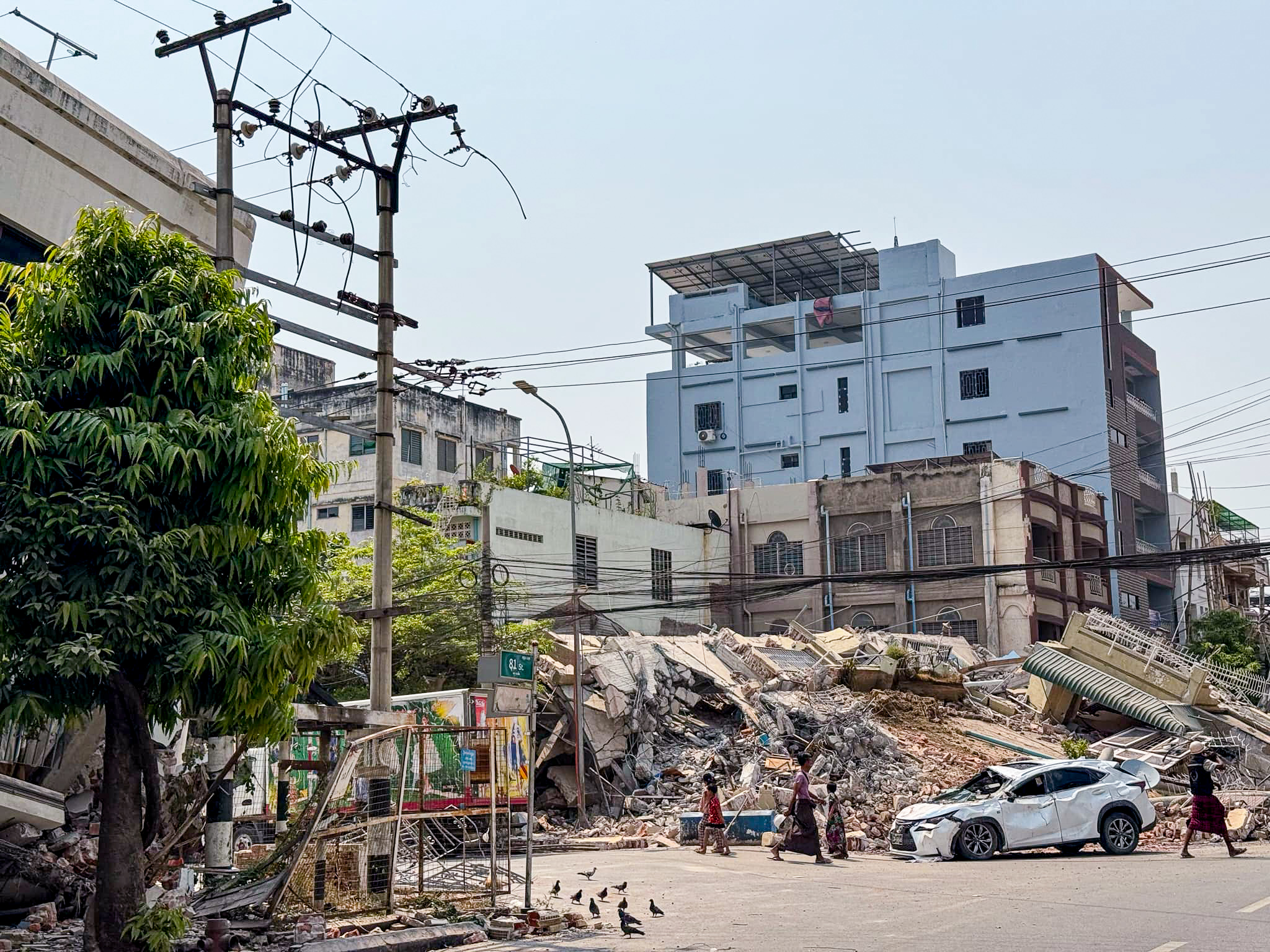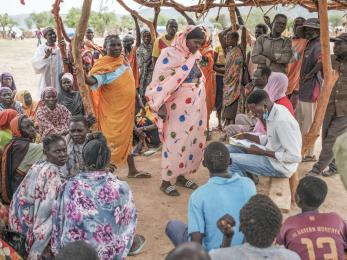The world's 5 biggest refugee crises

The refugee crisis is a human crisis: Behind the statistics are people filled with unique life experiences and dreams for the future. They are mothers longing to return home, fathers yearning to work again, children searching for a childhood.
We are witnessing a massive shift of humanity unlike any seen before. Today nearly 80 million people around the world are displaced from their homes.
What does it look like for that many people to be displaced?
It would be like over half the population of Russia going homeless. Or everyone in the United Kingdom having to leave the lives and communities they built, so they and their families could be safe.
More than a third of the world’s displaced population — some 26 million people — have been forced to flee their own countries entirely, leaving familiar lands behind and becoming refugees. Refugees are defined as people forced to leave their countries because of persecution, war or violence.
Over half of those refugees come from just five countries: Syria, Afghanistan, South Sudan, Myanmar and Somalia.
Elsewhere around the world, people are also being displaced at staggering rates, but are categorised by a status other than "refugee" — like many of the 3.6 million Venezuelans living outside of their home country.
With your support, Mercy Corps is responding to these crises with emergency assistance to help refugees meet their urgent needs around the world. Our refugee response reaches people in more than 20 countries with support like cash, food, water, shelter, youth centers and life skills training.
All refugees have suffered unimaginable loss, whether they are displaced in their own country or seeking safety overseas. Yet they are filled with potential and the strength to triumph over adversity. Their story is our story, because we are all human — and together, we can build a better world.
Read on to learn more about where the refugee crisis is hitting the hardest, and how you can help.
1. Syria: 6.6 million refugees

The Syria crisis has accelerated more dramatically than any crisis on earth, and Syrians continue to be the largest forcibly displaced population in the world. After war erupted in March 2011, it took two years for 1 million people to be displaced. Another million were displaced within six months. Now nine years on, more than half of the pre-war population has been internally displaced or forced to seek safety in neighbouring countries. That’s more than 13.2 million people on the run, including more than 6.6 million people who have escaped across the borders.
In 2019, Mercy Corps provided assistance to 1.48 million people all across Syria with urgently needed food, water, blankets and other essential supplies.
Get the quick facts about the Syria crisis ▸
We’re also working to reach the millions of Syrian refugees now living in other countries. In a colorful classroom in Jordan’s Za’atari refugee camp, 12-year-old Joury paints a picture of a garden. It’s a place she remembers from Syria, with tall trees that linger in her memory from visits there with her grandmother.
Joury fled Syria with her family eight years ago. There is no way to know if she will be able to go home again. At a Mercy Corps youth centre in Za’atari, art helps young refugees like her cope with their stress and enjoy being kids again.
“In Syria I wanted to be an artist, but I didn’t know how to draw,” she says. “I learned how to draw at Mercy Corps [youth centre programme].”
“When I am thinking of anything, I just like to draw it. I feel comfortable when I draw.”
2. Afghanistan: 2.7 million refugees

Years of unemployment, insecurity and political instability have led to a massive migration from Afghanistan. More than 2.5 million people are estimated to be living in new and prolonged displacement, while more than 2.7 million people have been forced to leave the country to Iran, Pakistan or Europe.
The United Nations estimates that an average 1,100 people a day — mostly women and children — were forcibly displaced by violence in 2017. As of 2018, over half of people displaced by conflict in Afghanistan have been displaced at least twice, compared to just 7 per cent five years before.
Get the quick facts about the Afghanistan crisis ▸
Mercy Corps is working to build a stronger future within Afghanistan by training farmers to grow better crops, improving economic opportunities for youth, teaching new mothers healthy nutrition practices, and helping women and girls find better access to financial services and job opportunities.
We’re also helping Afghan refugees while they live away from home. Shakila, 31, fled Afghanistan with her husband and three children, seeking a better life. Now they wait in Greece for a future they’re not sure will ever arrive.
Mercy Corps is providing Shakila with a cash card to buy essentials for her family, while her daughter, Sonia, is in an art workshop at a Mercy Corps youth centre.
“I worry about my children,” Shakila says. “They need an education but here they just pass the days without anything. My daughter is depressed. She always stays inside the tent.”
“I'm a little older; I don't need anything. I just need my kids to go to school and have an education and change their future for good things to come.”
3. South Sudan: 2.2 million refugees
The situation in South Sudan is dire, and the largest refugee crisis in Africa. More than 4 million people have been uprooted from their homes since the start of a brutal civil war in 2013, including about 2.2 million people who have been forced to cross into neighbouring countries, the majority of them women and children.
Ongoing warfare, flooding and drought continue to worsen what is already a dangerous humanitarian crisis. There are massive needs for clean water, health care, sanitation, food, shelter, and protection across the country, and millions of people now require urgent support to survive.
Get the quick facts about the crisis in South Sudan ▸
Angelina feels that struggle deeply. She fled conflict in her village twice looking for a safe place for her family. The last time she fled, her home was burned behind them.
For five days she walked through deep water, floating her children on a plastic tarp until they found refuge on Nyoat Island, where they rely on food assistance and water lilies to survive. Her children leave by canoe every morning at 4 a.m. to go to a local school Mercy Corps supports.
“I set up here because I am tired of running from enemies,” she says. “I decided to come here for two reasons: for fear — I feel safe here — and because I can get water lilies for my kids.”
“I have hope [to find work] but I don’t know what kind of work. If there is an opportunity given and I can provide for my kids, then I will be happy. Even if I have some small seeds, then I can plant a vegetable garden and sell them and get some money.”
4. Myanmar: 1.0 million refugees
Since violence broke out in Myanmar’s northern Rakhine State in August 2017, more than 742,000 Rohingya have fled to Cox’s Bazar in southeast Bangladesh. Before the crisis began, Bangladesh was already grappling with its own humanitarian challenges, and hosting some 212,000 Rohingya who had escaped Myanmar during earlier periods of violence and persecution.
The speed and scale of the influx over the course of a three-month period in 2017 has placed tremendous strain on host communities and Bangladesh as a whole, making it one of the world’s largest and worst refugee crises.
Today, there are some 860,000 Rohingya seeking refuge in Bangladesh and at least 1.3 million people — Rohingya refugees and Bangladeshi host communities — who rely on humanitarian assistance to meet their basic needs. More than half of them are children. These populations live in desperately overcrowded camps and communities, highly vulnerable to oncoming monsoon and cyclone seasons.
5. Somalia: 0.9 million refugees
More than two decades of ongoing conflict and natural hazards such as prolonged drought and flooding have driven nearly 1 million Somalis to live in destitute refugee camps in the Horn of Africa and Yemen, while some 2.6 million people remain displaced within the country.
Many people across the country are in need of assistance. In early 2020, it was estimated that 1.2 million people face acute food insecurity — a number that is projected to increase as swarms of desert locusts infest farmland and rangeland in the Horn of Africa and East Africa.
Mercy Corps has been working in Somalia since 2005, improving access to food and water, rehabilitating waterways, supporting local markets and providing education and civic opportunities for youth. We are also providing livelihood opportunities, such as cash for work, to increase farm production and enhance the ability of communities to handle shocks like drought.
Famine and food security: What's at stake ▸
That support — and a long-term peaceful solution — is critical for people like 22-year-old Hadija. Two seasons of failed rains forced her to leave her village with her two children. Now she waits in a refugee camp, one of 160,000 people in her region whose life has been put on hold.
“In the village we lived from our animals, but they died from the drought,” she says. “The hunger brought us here. Unless things change, we have no hope of going back. We are depending on what relatives and friends give us.
“Tonight we have nothing to eat for my children and myself. We have no hope back at home, we just hope for people who wish us well to take care of us now.”
How you can help
In more than 40 countries, Mercy Corps partners to put bold solutions into action — helping people triumph over adversity and build stronger communities from within. With your support, we are helping millions of people meet their urgent needs and build a stronger tomorrow.
You play an important role in ensuring that refugees have the support they need. When we work together, we can help even more people feel safe from conflict, stay healthy and forge ahead to a better, stronger future.


